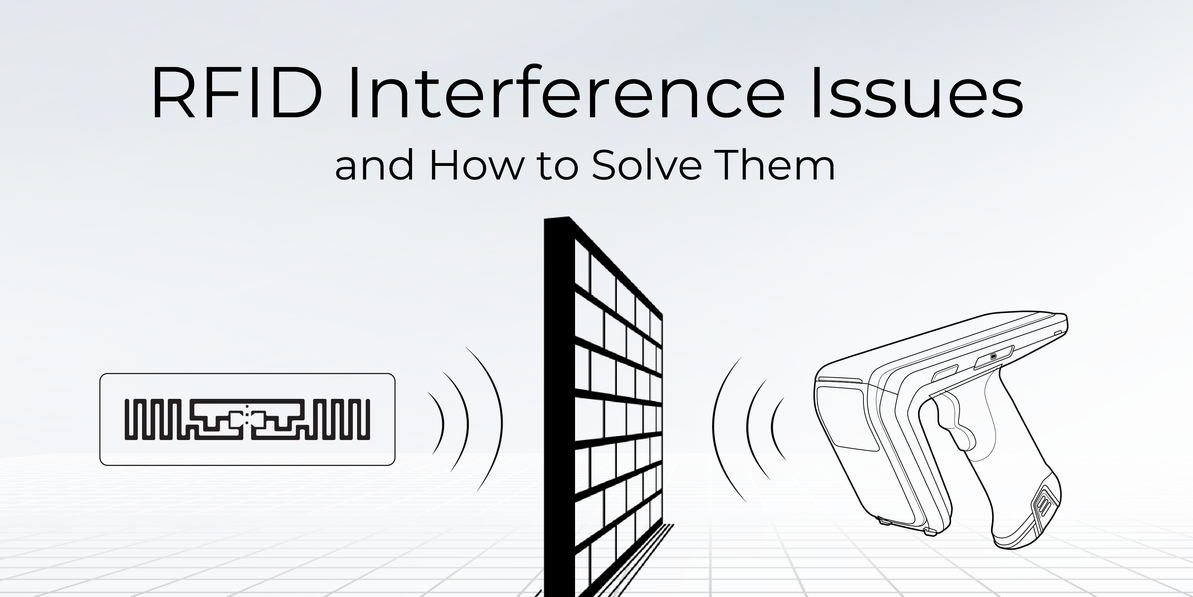Common RFID Interference Issues and How to Solve Them
RFID technology has revolutionized industries ranging from retail and logistics to healthcare and manufacturing. However, despite its advantages, RFID systems are prone to interference, affecting performance, accuracy, and efficiency. This article explores common RFID interference issues and provides solutions to mitigate their impact.
Types of RFID Interference
1. Electromagnetic Interference (EMI)
Electromagnetic Interference (EMI) occurs when unwanted signals disrupt RFID communication. Sources of EMI include power lines, industrial machinery, and electronic devices.
Solution:
- Use RFID frequencies less susceptible to EMI, such as UHF (Ultra High Frequency) RFID systems.
- Deploy RFID shielding materials around the system.
- Identify and eliminate nearby sources of Electromagnetic Interference (EMI).
2. Physical Obstructions
Physical barriers such as metal, water, and dense materials can absorb or reflect RFID signals, leading to poor read rates and read range.
Solution:
- Use RFID tags designed for metal surfaces or high-moisture environments.
- Adjust antenna positioning to avoid obstructions.
- Utilize Near-Field RFID technology for metal-heavy environments.
3. Reader-to-Reader Interference
RFID readers operating on similar frequencies in close proximity may interfere with each other, leading to data inconsistency.
Solution:
- Use frequency hopping or time multiplexing to manage multiple readers.
- Adjust power levels to prevent overlapping read zones.
- Implement directional antennas to reduce cross-reader interference.
4. Environmental Factors
Temperature, humidity, and other environmental conditions can impact RFID performance.
Solution:
- Choose RFID hardware designed for extreme environmental conditions.
- Implement environmental shielding techniques where applicable.
- Regularly test and calibrate RFID systems.
Causes of RFID Interference
1. Metal and Liquid Interference
Metal reflects RFID signals, while liquids absorb them, leading to inconsistent read rates.
Solution:
- Use RFID tags specifically designed for metal and liquid environments.
- Experience different tag placements and orientations.
- Deploy RFID foam spacers to reduce signal absorption.
2. Poor RFID Antenna Placement
Incorrect RFID antenna positioning can lead to weak signal coverage and poor read accuracy.
Solution of poor antenna placement:
- Conduct a site survey to determine optimal antenna placement.
- Adjust antenna angles to enhance signal coverage.
- Use multiple antennas for comprehensive coverage.
3. Multipath Interference
Multipath interference occurs when RFID signals bounce off surfaces, creating duplicate or ghost reads.
Solution:
- Utilize antennas with circular polarization.
- Implement filters to eliminate duplicate reads.
- Adjust read power levels to reduce unintended reflections.
4. Incorrect RFID Frequency Selection
RFID systems operate on different frequencies (LF, HF, UHF), and selecting the wrong frequency can impact performance.
Solution:
- Choose the appropriate RFID frequency based on application needs.
- Consider regional regulations for RFID frequency allocation.
- Test different frequencies to determine optimal performance.
Solutions to RFID Interference
1. RFID Shielding Techniques
Shielding can block unwanted signals and enhance RFID performance.
Methods:
- Use RFID-blocking materials to prevent cross-talk.
- Deploy shielding enclosures around RFID readers.
- Implement Faraday cages where necessary.
2. Proper RFID Antenna Placement and Orientation
Proper placement ensures optimal read accuracy and minimal interference.
Best Practices:
- Position RFID antennas to maximize line-of-sight communication.
- Test various orientations to find the best configuration.
- Consider using phased-array antennas for better signal control.
3. RFID Frequency and Protocol Adjustments
Optimizing frequency and protocols can mitigate interference effects.
Strategies:
- Use frequency-hopping spread spectrum (FHSS) to avoid interference.
- Implement data filtering techniques to improve accuracy.
- Configure RFID readers to operate at different times to reduce conflicts.
4. Using RFID-Friendly Materials
Selecting the right materials can enhance RFID system efficiency.
Considerations:
- Choose RFID tags with encapsulated antennas.
- Avoid using reflective surfaces near RFID zones.
- Use protective casings to minimize environmental impact.
Case Studies and Real-World Applications
1. RFID in Warehouse
A large logistics company experienced signal degradation due to metal shelves. By switching to metal-friendly RFID tags and adjusting antenna positions, they improved accuracy by 30%.
2. RFID in Healthcare
A hospital using RFID for patient tracking faced interference from medical equipment. Deploying RFID-shielded enclosures and optimizing reader placement reduced errors significantly.
3. RFID in Retail
A retail store encountered interference due to multiple readers in proximity. Implementing frequency hopping and adjusting power levels minimized data collisions.
Future Trends in RFID Interference Reduction
- AI-Driven RFID Optimization: AI algorithms can dynamically adjust RFID settings to minimize interference.
- Advanced Shielding Materials: New materials can enhance signal strength while reducing interference.
- 5G Integration: 5G connectivity can improve RFID data transmission and reduce interference issues.
- Improved Anti-Collision Protocols: Advanced protocols will enhance multi-tag reading capabilities.
Conclusion
RFID interference issues can significantly impact system performance, but with the right strategies, these challenges can be mitigated. By understanding interference sources, optimizing hardware placement, and implementing shielding techniques, businesses can ensure reliable RFID operations. As technology evolves, solutions such as AI-driven optimization and improved shielding will further enhance RFID efficiency and reduce interference concerns.
Recent Posts
-
Revolutionizing Asset Tracking in 2026 with Zebra RFID Readers
As enterprises scale and supply chains grow more complex, the need for real-time, error-free asset v …Nov 5th 2025 -
Ultimate Comparison of Zebra RFID Printers: Desktop vs. Industrial vs. Mobile
RFID printing is no longer a niche capability—it’s a cornerstone of modern asset tracking, inventory …Oct 22nd 2025 -
RFID Portal Deployment Checklist: From Site Survey to Calibration
Deploying an RFID portal involves far more than mounting readers and antennas. It requires a methodi …Oct 9th 2025




